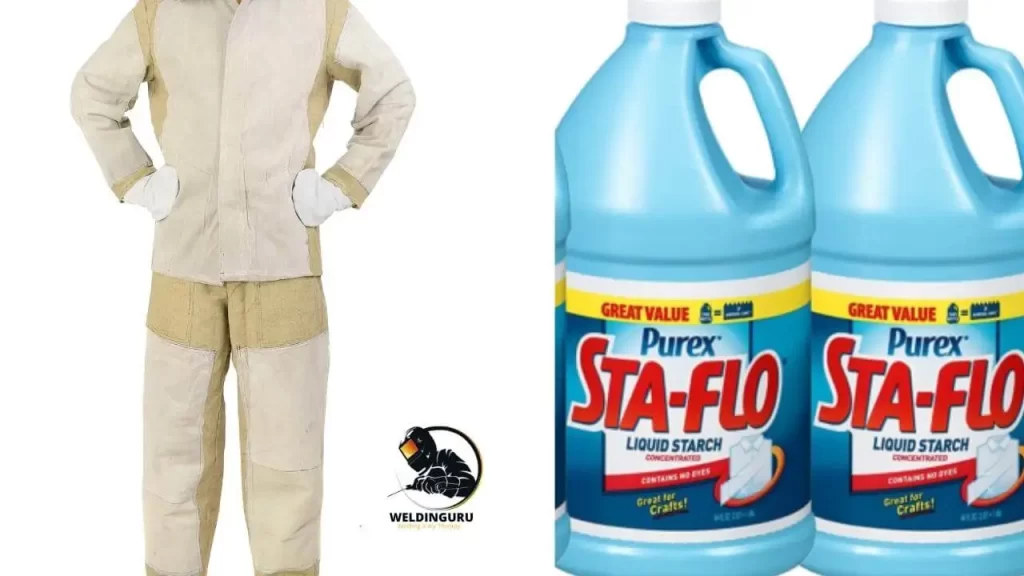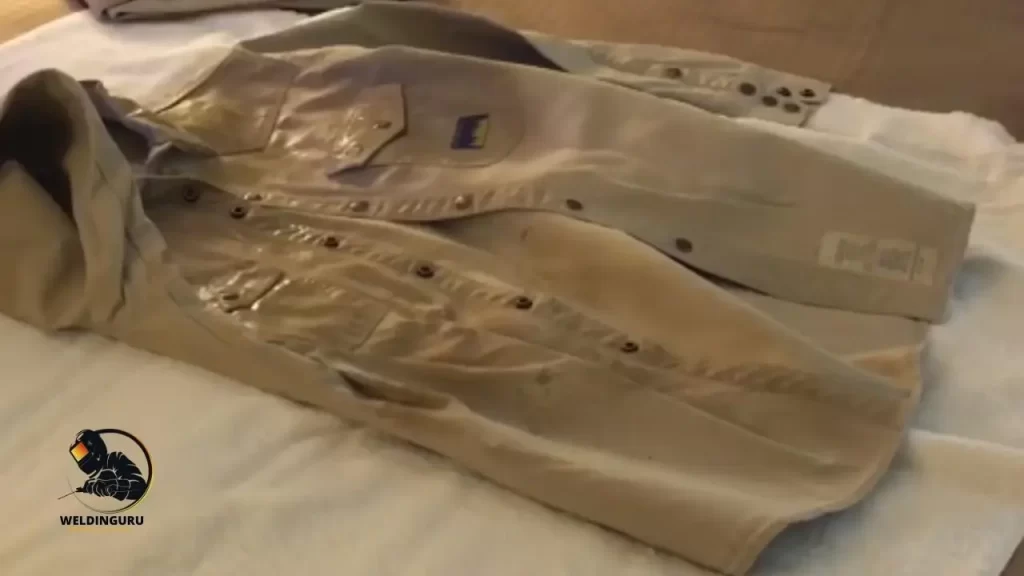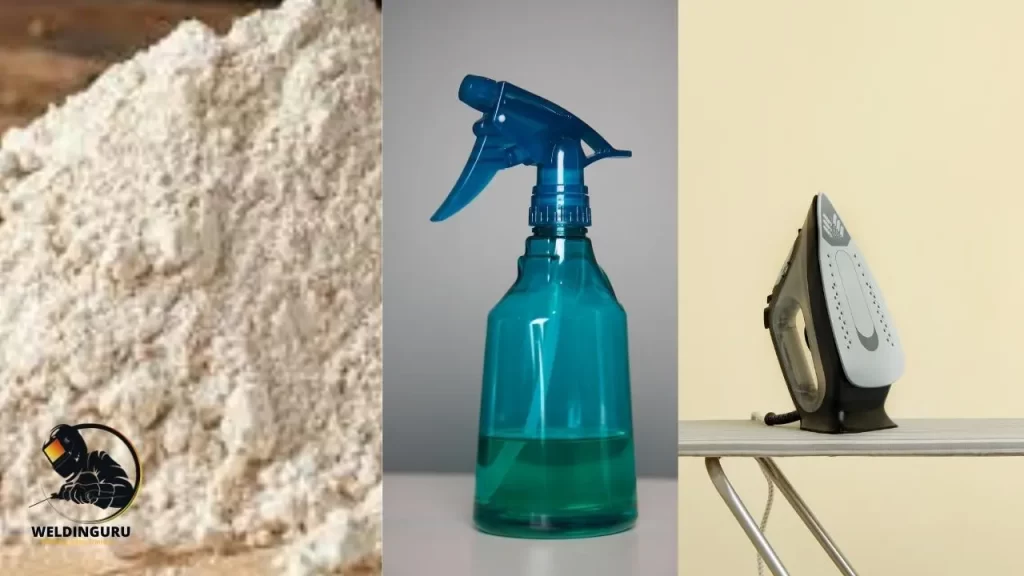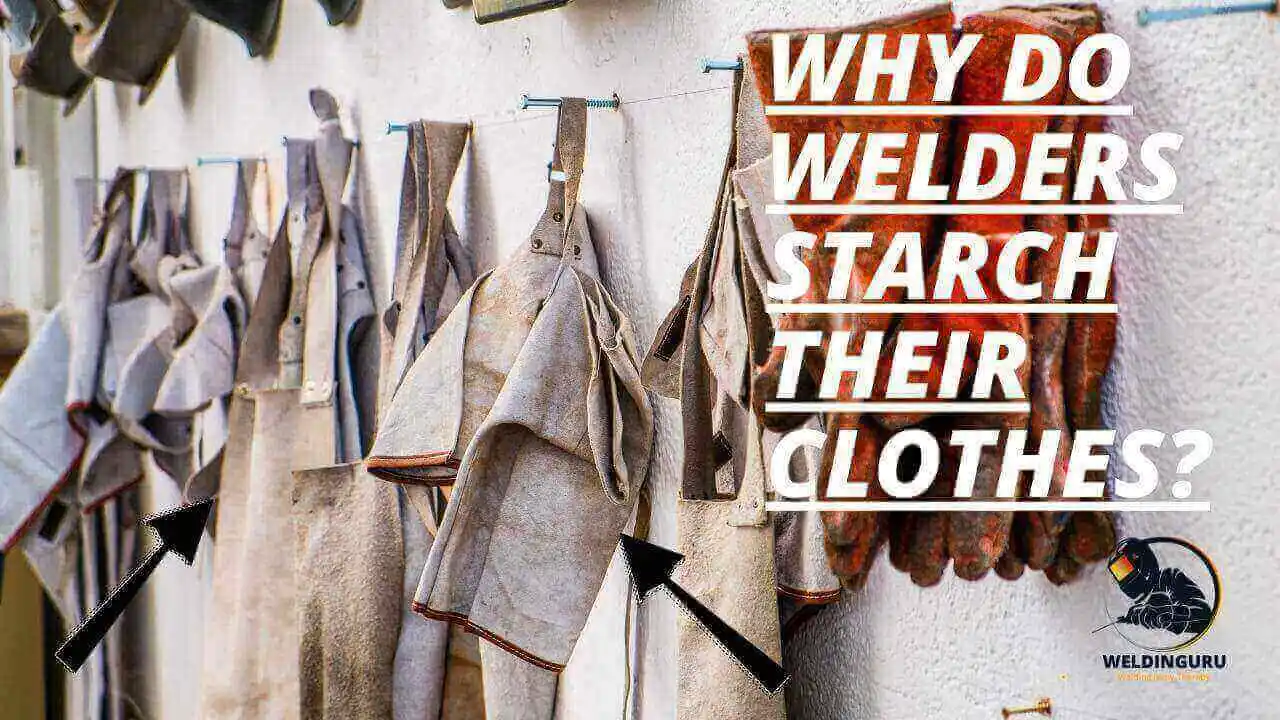Have you always wondered why welders starch their clothes? If you’ve ever been curious about why welding line is frequently applied to the clothes of welders, you probably weren’t aware that the starch on their clothing helps provide a barrier against dirt, grease, and more.
This reduces buildup on your clothing during the welding process, which can be damaging. The starch creates a protective layer on your clothes that offer more durability over time.
We have the answers to your questions. This blog will cover why and how you should starch your clothing. We will also suggest a very effective way that will help you reduce the amount of damaged caused to your clothes and your skin. So read on to learn why you should starch your clothes while you are welding.
Why do Welders Starch their Clothes?
When you first begin welding, you might think your clothes won’t last long, but it is unlikely that the fabric will stay in good condition when you have been doing it for some time. After some time, there will be holes throughout, which allows the heat to burn you, and with that comes the risk of getting bad burns.
You must have noticed that your clothes get holes really fast. Because of welding, it can become tough to wear them any longer than is needed. And since the material of your clothes is flammable, this might result in burns and other unwanted injuries to occur.
After a few times of buying jeans and shirts, it gets costly and repetitive. But if you want to splurge on some trendy new gear that’s longer-lasting, you can always buy high-end FR clothing. Also, suppose welders want variety in their wardrobe but also don’t want to drain their bank account.
In that case, they also have cheaper options available: they can starch their own clothes since this will double or triple the longevity of their current outfits.
What is Starch in Welding?

A welder’s starch is a relatively simple thing. It’s just a powder that you put on clothing to protect you against fire.
Thus, Welder’s starch is a kind of heavy starch used as a fire-retardant on flame-resistant clothing so that sparks flying from welding equipment don’t ignite the shirt of a welder.
A new type of Welder’s starch has been developed using a special kind of starch that has similar qualities to cornstarch, but it is stronger and works better.
Also See: Explained all Types of Welding Joints
Why are Welders Clothes Always Starch? How it Helps!

Starching your clothes before you go weld is crucial for preventing dangerous burns whilst out on a job. If your clothes are properly starched, sparks and spatter are less likely to taint them and make it harder for them to provide protection from hot metal cutting through your skin.
The reason most burns in welding involve 3rd-degree burns is due to the high temperatures, which can reach up to over 200 degrees Celsius!
The starch acts as a natural fire retardant for wooden ironing boards. Since vegetable-based spray starch is water-based and evaporates readily, it quickly extinguishes tiny fires that may erupt from an iron.
Starch also has sound absorbing qualities, which can be used to reduce any screeching or other irritating noises made by the iron while you press your fabric.
Another clothing option you can use in conjunction with your welding jacket or pants is a coster made of 100% cotton or denim, which you can purchase at a fabric store.
To starch these, simply toss the costume into the washing machine and add one cup of liquid starch along with detergent. Then wash as normal in cold water before drying on low.
We recommend never starch Teflon-coated welding clothes because this could reduce the heat (temperature rating) of the garment.
In order for the liquid to be able to soak into the material, synthetic materials have too many microscopic holes that won’t permit that. If you also splurged on FR clothing, it is completely fine to starch it.
We do not suggest adding an extra layer of protection with a spray-on coating or throw-on towels as these types of outerwear are best suited for their purpose without this extra step being needed.
Clothing made of natural fibers like cotton is highly combustible and should only be worn when performing welding. If possible, a full leather jacket (including the sleeves) would be much safer than wearing something made of cotton.
If you’re not able to obtain a leather jacket, consider wearing some hard protective gear that covers the arms and the hands instead.
An additional layer of protection will aid in decreasing the chances of burns on your body and clothing by way of preventing sparks from landing on or searing through them as you work.
The starch in the cotton fabric can cause a painful clothing burn, so wear an apron if you have any reason to believe your clothes might get splashed.
You might find leather jackets or even complete flame-retardant suits are preferable to cotton during some welding operations, which may involve high temperatures or stronger electron beams if welding steel with a TIG welder.
Starching garments by yourself is something that welders have been doing for decades. However, doing it at a laundromat can be more expensive than using it on your own clothes if you’re doing it on an ongoing basis.
We know the laundromat is the easy way out, but we think that when it comes down to the economics of things, you’re better off investing in FR clothing from the start rather than paying them to starch your special outfits.
Believe it or not, starching a shirt actually improves the performance of your welding performance as it gives you a sense of safety. Wearing starched clothes does take some getting used to, though, as the starched fibers are stiffer, and the clothing may feel stiff, especially if you’re used to soft cotton shirts.
However, the clothing will become more comfortable over time as the starch molecules break down and replace themselves with natural body oils.
The best part is that you can use these products every now and again instead of constantly buying new shirts because you have worn out all of your old ones.
Also See: Effects Of Welding On Eyes
Starch For Welders – How to Choose the Right Equipment?
Any piece of protective gear that you’re wearing should leave your full range of motion pretty much unhampered, nor should it hinder the functionality of any special tools or weapons you might be carrying.
Therefore, fire retardant material is not necessary because all but loose-fitting cotton clothing would prevent fire from harming a firefighter.
Any type of protective gear that you are wearing can be starched, including shirts, pants, apron, jackets, sleeves, and even gloves! Just put them on after washing or dry cleaning and turn your regular spray starch upside down. Avoid brushing any cotton or denim items because the bristles will tear up the fibers.
Likewise, you don’t need to starch your fireproof boots or helmet as they are made of special material with fire-resistant fibers that come in many different forms.
Best Tools Required to Starch your Welding Clothes

I am sure that most of you were thinking “No Starch For Me!” when I put the cost of taking your clothes to the dry cleaners above. Most welders don’t want to let someone else starch their clothes for them if they can help it.
If you are thinking about doing the job yourself, you need three things: starch, a spray bottle, and a pressing iron. My concern with to spray bottle, you get what you pay for.
When people try to save money by buying a low-priced version, they complain that they get a hand cramp in the process after applying it to their clothing.
Usually, though, a little extra money goes a long way in protecting your hands and back alike, as well as making the job go faster. So make sure you look around for good prices on Amazon before sealing the deal so that you do not sacrifice quality for the price.
Also See: Can Welding Make You Blind?
The Ultimate Guide to Starching Your Welding Clothes
The most important part of getting your clothes to stand up properly is making sure that they’re not too wet. This will prevent them from getting stiff, but if you happen to notice that they are too damp, just give them time to dry before starching.
First, spray Purex Sta-Flo starch on the items of clothing that need it and allow it to soak for about a minute. Make sure you properly follow the instructions on the Sta-Flo itself while you’re using starch.
First, add liquid starch to the Sta-Flo Cleaner and mix thoroughly to dilute. Once you’ve added your frequency-increasing ingredients, spray down your garment with the diluted mixture and hang it up on a clothes hanger overnight to dry.
This will make sure that adequate time is given for the liquids to settle into your clothes as they should. The steaming ironing process takes almost the same time to do but with different benefits and costs.
Therefore, we recommend combining the use of both implements for most projects for a guaranteed and better result.
Starching clothes manually can help to improve their appearance and make them look presentable. The best grime for starching is cotton or denim, though there are other materials that will allow you to achieve a more effective end result if these are used instead.
Type of clothing should you starch and what shouldn’t you
it’s best to dress up in clothes that can help put off sparks. Synthetic and all-synthetic blends are going to heat up faster than 100% cotton or wool clothing. Natural fibers tend to be slow-burning and easier to extinguish if they get caught on fire.
Make sure you’re wearing only the right blend of denim as well since current fashion trends have introduced synthetic materials into denim’s traditional blend. Whether you are welding or not, wool clothes that are crafted in natural material are most often comfortable to wear.
However, everyone knows that in the summertime, it can get extremely hot and uncomfortable after being exposed to direct sunlight for a while, no matter what material they are made of.
It’s important to understand when it comes to protection from dangerous chemicals and deadly pathogens that starch does not act as a replacement for proper PPE.
Aprons, safety sleeves, leggings, and capes are used in addition to uniforms and other garments made of starched fabric that is used as a protective outer layer against various chemicals and biological agents.
Conclusion
There are many different types of protective clothing used by welders and metal workers. One of these is the special coveralls with liners that are commonly used for arc welding.
We hope you enjoyed this blog post, and we hope it provides you with all the information you need to know about starching welding clothes.
Always remember that you should prefer 100% cotton materials for starching and welding; they will last the longest and will also provide the best protection. If you have any other questions or concerns about starching welding clothes, please contact us anytime.
Thank you for reading. We are always excited when one of our posts is able to provide useful information on a topic like this! If you would like more information about starching welding clothes, please contact us anytime at ___. Thank you for reading. We love hearing back from our readers.
FAQs
Here are some frequently asked questions.
How do you heavy Starch Clothes?
Starching is a technique used to prepare fabrics for sewing or painting. Historically, starching helped stiffen and preserve woven fabrics – a technique that has been practiced since the Middle Ages.
One who starches fabric is known as a stapler and also applies to size to fabric using either starch paste or similar products in order to create bulk before pressing.
Modern times have seen a renaissance with regards to this traditional art form, with many hairdressers and alternative stylists now appreciating, teaching, and sharing this form of styling due to the fact it can be difficult for an everyday person; to find a place to starch their clothing regularly!
Below, we’re going to share some tips with you on how you can at-home create your own professional-looking shirts that last longer without having all the costs associated when regularly visiting the dry cleaner.
Are FR Shirts good for Welding?
Flame-resistant shirts are very comfortable and have a high level of protection from heat and sparks. In addition, the flame-resistant shirts are made from cotton material, which is durable and complies with NFPA 70e, and meet the requirements of NFPA 2112.
Flame Resistant Shirts can be bought in the United States, where Rasco is one of the most popular brands associated with FR t-shirts.
Is Starch Bad For Clothes?
You should only starch clothes you’re actually planning on wearing since most starching can lead to the attraction of insects. In addition, starch is bad for attention if it settles down in your garments. Moreover, starches are not meant for long-term storage. Starching welding clothing offers protection for normal clothing in the long run but not when it comes to the regular wearing of them. You might also need time getting used to a heavily starched shirt so keep that in mind before going out and purchasing such an item.
Related Posts:
